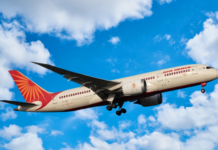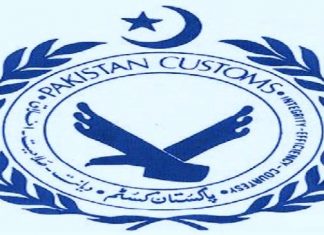NEW DELHI/HONG KONG: Air India is lobbying the Indian government to convince China to let it use a sensitive military airspace zone in Xinjiang to shorten routes as the financial toll from a ban on Indian carriers flying over Pakistan mounts, a company document shows.
The unusual request comes just weeks after direct India-China flights resumed after a five-year hiatus following a Himalayan border clash between the nations.
Air India has been seeking to rebuild its reputation and international network after a London-bound Boeing 787 Dreamliner crashed in Gujarat in June, killing 260 people and forcing it to briefly cut flights for safety checks.
But that effort is being complicated by the closure of Pakistan airspace to Indian carriers since their diplomatic tensions erupted in late April.
For Air India, the country’s only carrier with a major international network, fuel costs have risen by as much as 29% and journey times by up to three hours on some long-haul routes, according to the previously unreported document submitted to Indian officials in late October and reviewed by Reuters.
The Indian government is reviewing Air India’s plea to diplomatically ask China to allow an alternative routing and emergency access to airports in case of diversions at Hotan, Kashgar and Urumqi in Xinjiang, aiming to reach U.S., Canada and Europe faster, the document said.
“Air India’s long-haul network is under severe operational and financial strain … Securing Hotan route will be a strategic option,” it added.
The airline, owned by Tata Group and Singapore Airlines, estimated the Pakistan airspace closure’s impact on its profit before tax at $455 million annually – a significant amount given its fiscal 2024-25 loss stood at $439 million.
The Chinese foreign ministry said it was not aware of the situation and referred Reuters to the “relevant authorities”.
Air India and civil aviation authorities in India, China and Pakistan did not respond to Reuters’ queries.
Without Hotan Some Routes Becoming ‘Unviable’
The Chinese airspace Air India is seeking to access is ringed by some of the world’s highest mountains of 20,000 ft (6,100 m) or more, and is avoided by international airlines due to potential safety risks in case of a decompression incident.
More critically, it also falls within People’s Liberation Army’s Western Theater Command, which is equipped with extensive missile, drone and air-defence assets and shares some airports with civilian aircraft, military analysts say.
The Pentagon’s December report on China’s military said the command’s responsibilities include responding to any conflict with India.
China’s military has much greater control of the country’s airspace than in most other aviation markets, restricting flight paths. Open-source intelligence tracker Damien Symon said China’s military has recently expanded an airbase at Hotan.
China’s defence ministry did not immediately respond to a request for comment.
Data from AirNav Radar shows no non-Chinese airlines departed or arrived at Hotan airport in the last 12 months.
Shukor Yusof, founder of aviation consultancy Endau Analytics, said: “Air India can try, but it’s doubtful China will accede” to access given the region’s terrain, lack of emergency airports and possibility of security issues.
Airspace globally has been constricted due to proliferating conflict zones.
U.S. carriers have been banned from flying over Russia since the Ukraine war began in 2022 and pulled out of many U.S.-India routes. That gave Air India a near-monopoly on non-stop flights from India.
But after the Pakistan airspace closure, Air India’s Delhi-Washington route was suspended in August. Now other routes are under review, with the direct Mumbai- and Bengaluru to San Francisco routes “becoming unviable” due to an additional three hours of travel time, including a technical stop in Kolkata, the document said.
A flight from San Francisco to Mumbai on Lufthansa via Munich is now only five minutes longer than on Air India.
“Passengers (are) shifting to foreign carriers due to shorter flight time as they have the benefit of Pakistan overflight,” the document said.
Air India estimates the requested Hotan route in China could substantially cut extra fuel requirements and flight times, help restore passenger and cargo capacity trimmed by as much as 15% on routes like New York- and Vancouver-Delhi, and reduce losses by an estimated $1.13 million per week.
Cash Flow Burden Deepens Finance Woes
With no signs of airspace ban easing, Air India also wants “temporary subsidy till Pakistan airspace opens”, the document said.
Air India, which has placed $70 billion of aircraft orders, is seeking help resolving legacy tax issues.
India’s government indemnified the airline against claims payable before selling it to Tata in 2022, but several notices have been received related to old tax liabilities of $725 million, raising legal and reputation risks, the document said.
A confidential government notice from March, seen by Reuters, showed tax authorities warned of “coercive steps” – which can include freezing of assets – to recover dues of $58 million in one case.
Contesting such tax demands has led to “additional cashflow burden … despite assurances during disinvestment”, the airline said.
























